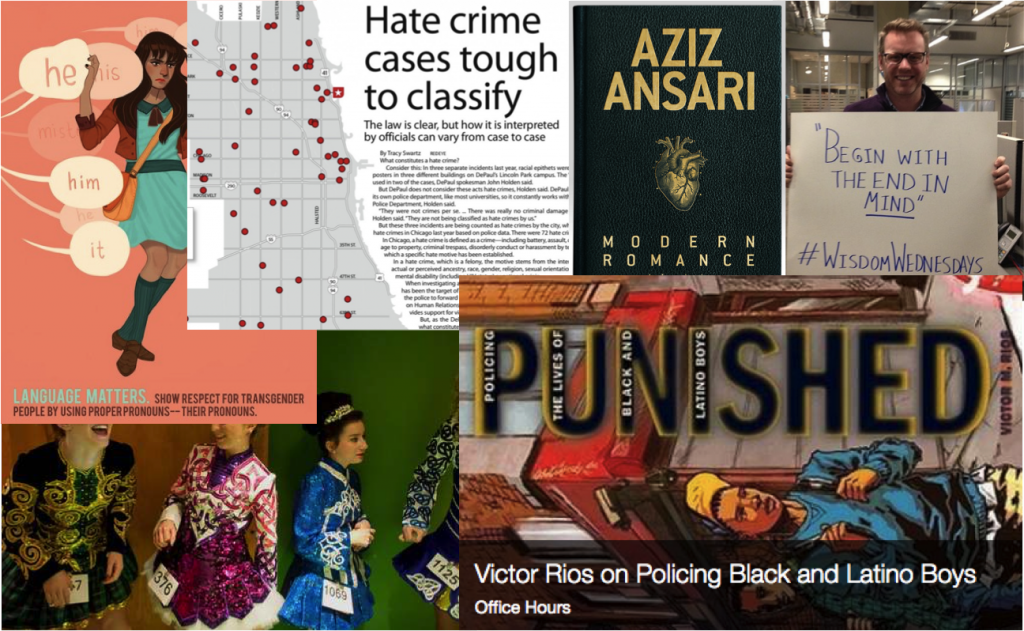Adam Gopnik is at it again. This time our favorite writer from The New Yorker uses recent public debates about poverty and foreign policy to talk about that oh-so-sociological concept of norms. Gopnick tells us how norms differ from laws: “a law is something that exacts an announced cost for being broken. A norm is something that is so much a part of the social landscape that you wouldn’t think, really, that anyone could break it.” He tells us why these informal rules matter so much to social life (they constitute the unwritten, daily spirit and practice social order requires and law tries to systematize and impose), how they are enforced (like anything else “by bribes and threats and clear punishments” in actual communities and social contexts), and what can happen when they are eroded or violated (basically, all hell can break loose). The underlying irony in the piece is that those “Republican moralists” whom Gopnick says are breaking some of our most sacred political norms are cut from the same cloth as those who claim normative collapses are at the root of poverty and inequality in the United States. But Gopnik doesn’t really dwell on the politics. Rather, he seems mostly to want to edify us all about the meaning and import of norms in human life. He’s the journalist playing sociology professor, and doing a pretty darn good job of it.
Welcome, spring! Here’s some fresh soc to start the season off right.
Office Hours Podcast:
“Victor Rios on Policing Black and Latino Boys,” with Sarah Shannon. A TSP-alum, Shannon talks with Rios about his award-winning book Punished.
The Editors’ Desk:
“Education & Society,” by Chris Uggen. Welcoming TSP’s newest Community Page, under the direction of Rob Warren.
“Midwest Sociological Society Meetings: Register Now!” An update from MSS president Doug Hartmann on the meetings, which will feature Dalton Conley and Lisa Wade.
There’s Research on That!
“Joke’s on You: The Italy/ISIS Twitter Exchange,” by Sarah Catherine Billups. With research from Christie Davies, Elise Kramer, Karen Parkhill, and more.
“Race and the Classroom,” by Neeraj Rajasekar. With research from Sylvia Hurtado, Josh Packard, Lisa M. Nunn, and more.
“How Hate Crimes Count,” by Evan Stewart, Jack Delehanty, Ryan Larson, and Stephen Suh. With research from Ryan King, Jack Glaser, Louise Cainkar, and more.
The Reading List:
“Misdemeanors as a Form of Social Control,” by Ryan Larson. New work from Issa Kohler-Hausmann.
“Egalitarian Dreams, Unequal Marriages,” by Anne Kaduk. Research from David S. Pedulla and Sarah Thebaud.
“Talking Trash: High Status Explanations for Watching Low Brow TV,” by Sarah Catherine Billups. Charles Allan McCoy and Roscoe Scarborough in Poetics.
Give Methods a Chance Podcast:
“Matthew Hughey on His Tripartite Methodological Approach to Understanding Film,” with Kyle Green. TSP alum Green interviews UConn’s Hughey.
Citings & Sightings:
“Subsidizing the Suburban Commute,” by Neeraj Rajasekar. Alexandra Murphy on why social programs must extend to transportation.
“Old Dogs, New Tricks,” by Sarah Catherine Billups. Christine Whelan on SMART goal-setting.
“‘Treat Yo’Self’ to Some Sociology,” by Caty Taborda. Comic and actor Aziz Ansari teams up with sociologist Eric Klinenberg. The rest is… a new book!
“D8TR Dilemma: Millennials ‘Just Talking’, ‘Hanging Out’,” by Sarah Catherine Billups. Kathy Hull on the new terminology of budding relationships.
“Unsurprising Stats: Hollywood Lacks Diversity,” by Caty Taborda. UCLA’s Darnell Hunt and Ana-Christina Ramon see hope for diversity in new entertainment production platforms like Netflix.
Scholars Strategy Network:
“Financial Reforms Alone Cannot Reduce Household Debts for Americans Facing Low Wages and Insecure Jobs,” by Sara M. Bernardo.
“The Harm Done by Media Coverage of Political Disputes about Public Health Measures,” by Erika Fowler and Sarah Gollust.
Council on Contemporary Families:
“An Analysis of New Census Data on Family Structure, Education, and Income,” by Shannon Cavanagh.
A Few from the Community Pages:
- Education and Society debuts its new interview feature with three questions with Josipa Roksa.
- Sociological Images rounds up the best of February, revisits Skull-Face, and talks Irish dance and changing ideas of race.
- Sociology Lens on pronouns, gender policing, and a new(ish) acronym: PGPs.
- Girl w/ Pen! and its latest Manly Musings: Beyond “Bossy” or “Brilliant”? Gender Bias in Student Evaluations.
Our Latest Book!
Sign Up for Inbox Delivery of the Roundup!
The Last Roundup!
My father in law once asked, “How’re things going down at the brain mill?” Well, today I’d respond that these are challenging but exciting times in education. We’ve all read the headlines — powerfully disruptive technologies, troubling race and class disparities, privatization and disinvestment in public schools, historically high tuition and debt loads, school-to-prison disciplinary pipelines, and rapidly changing demographics. While social scientists are doing important research to make sense of these changes, there are few accessible resources for “interested non-experts” who want to keep up with the field. That’s why we’re so happy to welcome our new Education & Society community page to TSP. We’ve been wanting to expand coverage of the “education beat” for years.
An interdisciplinary team of Minnesota-based education researchers writes and curates features like 3 Questions, 250 Words, and Education in the News. You’ll find interviews with education researchers as well as terrific summaries of new education research appearing in journals like the Annals, American Journal of Education, Sociology of Education, and Social Psychology Quarterly. We’ll be featuring Education & Society on the TSP main and topical pages as well as in our social media feeds. But anyone curious about life at the brain mill should regularly stop by the community page and Twitter feed.
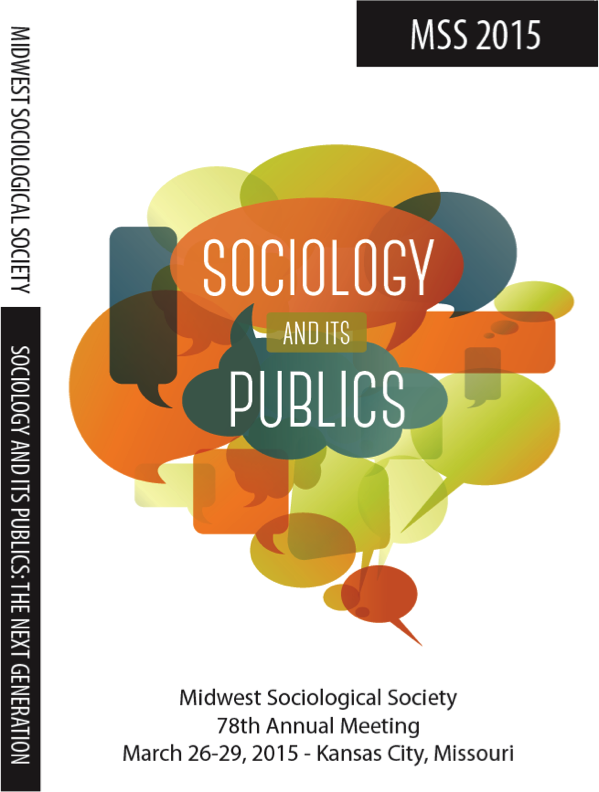 Only two days left to get the early-bird registration fee for the upcoming Midwest Sociological Society meetings in Kansas City, March 26-29th. The meetings, for which I serve as Program Chair are titled “Sociology and Its Publics: The Next Generation.” They will feature keynotes from Occidental’s Lisa Wade, founder and author of the wildly popular TSP blog Sociological Images, and NYU’s Dalton Conley, author of You May Ask Yourself: An Introduction to Thinking Like a Sociologist and Being Black: Living in the Red.
Only two days left to get the early-bird registration fee for the upcoming Midwest Sociological Society meetings in Kansas City, March 26-29th. The meetings, for which I serve as Program Chair are titled “Sociology and Its Publics: The Next Generation.” They will feature keynotes from Occidental’s Lisa Wade, founder and author of the wildly popular TSP blog Sociological Images, and NYU’s Dalton Conley, author of You May Ask Yourself: An Introduction to Thinking Like a Sociologist and Being Black: Living in the Red.
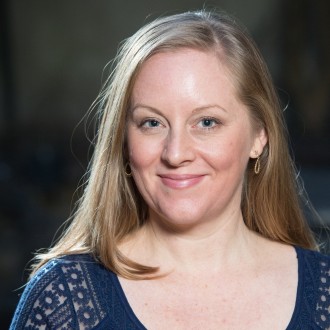
Wade’s presentation, “Doing Pubic Sociology: Notes from a Practitioner,” will take place on 3/26 at 4:30pm.

Conley’s presentation, “Out of the (Ivory) Tower and into the Fire: The Promise and Peril of Outward-Facing Sociology,” will take place on 3/28 at 4:30pm.
For more information and to register for the 78th annual MSS meetings, please visit www.TheMSS.org.
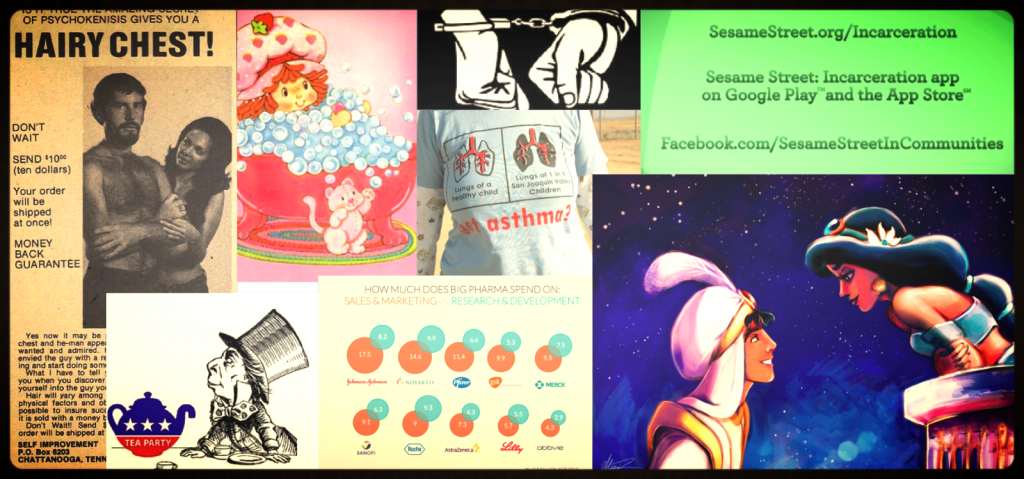 February may be a short month, but we’re never short on sociology to share.
February may be a short month, but we’re never short on sociology to share.
Roundtables:
“Is the (Tea) Party Over?” by Erik Kojola and Jack Delehanty. Scholars Meghan A. Burke, Ruth Braunstein, Andrew Perrin, and Robert Horwitz weigh in on the past, present, and future of a young political movement.
The Editors’ Desk:
“Oscar Winners Put Social Issues Center Stage.” A look at some accessible research on four big social issues raised in Academy Award speeches last weekend.
“Contexts: New Issue, New Site,” by Doug Hartmann. New editors Philip Cohen and Syed Ali have put out their first issue and launched the revamped contexts.org, hosted by thesocietypages.org.
There’s Research on That!
“Extra! Extra! Read All about It, All the Time!” by Sarah Catherine Billups. A look at media saturation with research from Sara Goldrick-Rab, Lauren Schudde, Jennie E. Brand, Fabian T. Pfeffer, Matthew Curry, Yu Xie, Mina Dadgar, Madeline J. Trimble, Christopher Jepsen, Kenneth Troske, and Paul Coomes.
“Who—and How—Community College Helps,” by Anne Kaduk and Amy August. A sociological primer on Obama’s plan to make two years of community college free, with work from Kenneth T. Andrews, Neal Caren, Rachel Best, Arnout van de Rijt, Eran Shor, Charles Ward, Steven Skiena, Karin Wahl-Jorgensen, and Stephen Ostertag.
Citings & Sightings:
“Cheap Gas Has Pricey Consequences,” by Neeraj Rajasekar. Guangqing Chi on the way pump prices change driving habits.
“God and Good Citizens,” by Sarah Catherine Billups. Penny Edgell on the perceived tie between religion and morality.
“Orphaned by Incarceration,” by Sarah Catherine Billups. When Sesame Street adds a character with a parent behind bars, Christopher Wildeman, Sara Wakefield, Kristin Turney, and John Hagan talk to The Nation.
“Happily Never After? The Challenges of ‘Marrying Up’,” by Sarah Catherine Billups. Scholar Jessi Streib discusses how cross-class marriages aren’t as common as they seem in the movies, but they certainly can, and do, work out in the real world.
Give Methods a Chance Podcast:
“Naomi Sugie on Using Smartphones for Research,” with Sarah Esther Lageson. Naomi Sugie tells GMAC, “Smartphones have their limitations, but they… can expand the realm of empirical investigation for researchers to consider questions and ideas we just weren’t able to think about before…”
Contexts Magazine:
The Winter 2015 issue is brimming with goodies! Some are available on contexts.org, but the full issue is out from behind its paywall for another three weeks at contexts.sagepub.com.
Council on Contemporary Families:
“Equal Pay? Not Yet for Mothers,” by Shelley J. Correll.
Scholars Strategy Network:
“The Promising Launch of Community-Oriented Charter Schools in New Orleans,” by Brian R. Beabout and Joseph L. Boselovic.
A Few from the Community Pages:
- Speaking of kids with incarcerated parents, Sociological Images takes a look. They also ask, who’s harmed by pesticide drift? Taking a turn, they consider the social construction of chest hair, pharma companies’ spending, and how strawberries caught on in the U.S.
- Sociology Lens asks, “Why are we obsessed with what teens are doing on social media?“
- Cyborgology checks out a new ad campaign, “#SpeakBeautiful: Reinforcing a dangerous metric,” and wonders “Why Do Many Reasonable People Trust Science?“
Our Latest Book!
Sign Up for Inbox Delivery of the Roundup!
The Last Roundup!
Attention, friends-of-TSP, attention: Philip Cohen and Syed Ali have taken the reins at the ASA’s Contexts magazine, and their first issue—plus site redesign by Todd Van Arsdale and Jon Smajda—has hit the web!
Ali and Cohen have assembled an all-star team of authors and a truly engaging read, cover to cover and link to link. Among the highlights: a suite of articles on gun culture, including Jennifer Dawn Carlson’s feature “Carrying Guns, Contesting Gender” (free, in full, on the web) and Stephen Thrasher,Jean Beaman, and Todd Beer’s pieces on Ferguson; an interview between TSP-alum Hollie Nyseth Brehm and genocide survivor Keith Chhe; Erik Olin Wright‘s take on Piketty’s Capital in the Twenty-First Century; and a look at how lesbians can be the leaders in gentrification by Amin Ghaziani, author of There Goes the Gayborhood?
For the first four weeks after each issue of Contexts is published, its entirety is available for free (no paywall!) from SAGE, its publisher. Other selected content is available right on contexts.org. Have a look around. Our illustrious partners are off to a great start, and we couldn’t be happier to have them as part of the TSP family.
- Equal Pay for Equal Work: The Council on Contemporary families offers aportfolio of research on 50 years since the Equal Pay Act, and we suggest checking out the pieces on how the wage gap narrows among high earners and how the wage gap is affected by race and ethnicity.
- Awareness of Diseases like ALS and Alzheimer’s: A 2012 American Sociological Review article by Rachel Kahn Best outlines how awareness campaigns bring more funding to medical research on some conditions, but add to the stigma associated with others.
- Voting Rights: The Scholars Strategy Network presents an overview of research on steps forward and back since the Voting Rights Act of 1963.
- Mass Incarceration: Sarah Shannon and Chris Uggen offer a starting point with their time-lapse visualizations of changes in American punishment, including the disproportionate incarceration of black men.
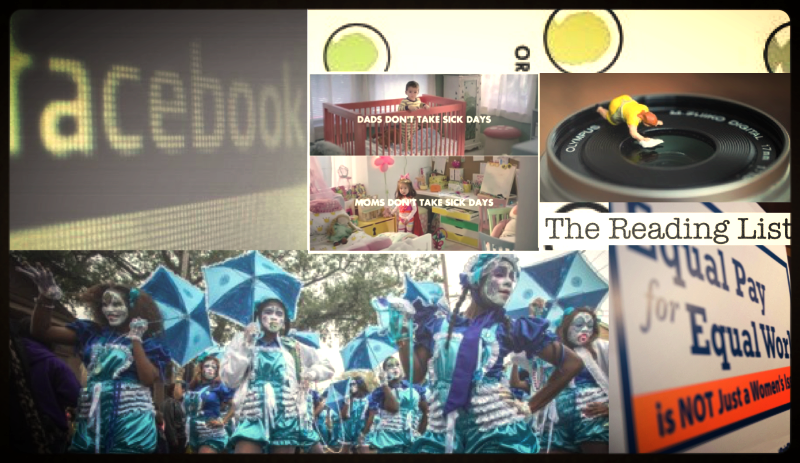 This week on TheSocietyPages.org…
This week on TheSocietyPages.org…
Office Hours Podcast:
“Hahrie Han on Organizing Political Activists,” with Evan Stewart. Dr. Han discusses her latest book and the shaping of political movements.
Teaching TSP:
“Intro to Sociological Methods Using the Reading List,” by Amy August. An exercise—with worksheets—designed to help students learn methods by distilling academic journal articles.
The Reading List:
“The KKK’s Living Legacy,” by Evan Stewart. New research from Rory McVeigh, David Cunningham, and Justin Farrell shows the Klan’s activities in the ’60s continue to affect today’s Southern politics.
Citings & Sightings:
“Self-Segregation in San Francisco Schools,” by Neeraj Rajasekar. Studies find school choice works through parents’ social networks to segregate schools.
“Working for the Long Weekend,” by Sarah Catherine Billups. Long weekends make a great treat, but one sociologist argues adopting the schedule full-time wouldn’t help work-life balance.
Scholars Strategy Network:
“Does Public Education Improve When Urban Districts Manage a ‘Portfolio’ of Schools?” by Katrina Buckley.
Council on Contemporary Families:
“Men against Women, or the Top 20 Percent against the Bottom 80?” by Leslie McCall.
A Few from the Community Pages:
- Sociological Images goes to Mardis Gras!
- Cyborgology on the exclusive aesthetic of writing—long-hand.
- Sociology Lens on the influence of Facebook in UK elections.
Our Latest Book!
Sign Up for Inbox Delivery of the Roundup!
The Last Roundup!
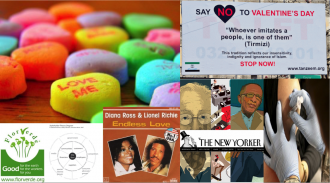 Not at all spooky, but always “soc-y.”
Not at all spooky, but always “soc-y.”
There’s Research on That!
“Justifying Our Love,” by Jacqui Frost. Americans love love, even when it hurts. How have love and culture mingled to create modern “love”? Frost brings research from Eva Illouz, Ann Swidler, Francesca Cancian, and Anthony Giddens.
“Vexed by Vaccination Refusals,” by Caty Taborda. Research on distrust of science and vaccinations, as well as network ties that spread medical knowledge—and sometimes skew it along the way.
The Editors’ Desk:
“The New Yorker: Champion of Serious Sociology,” by Doug Hartmann. Admiring the work of Kelefa Sanneh, Jill Lepore, and Adam Gopnik, who are all bringing sociology’s big ideas to the Big Apple.
Give Methods a Chance:
“Amy Schalet on In-Depth Interviews,” with Kyle Green. A leading sociologist on the methodology behind a time-consuming, but very rewarding, research technique.
Citings & Sightings:
“Books Behind Bars: College Courses in Prisons,” by Neeraj Rajasekar. Using reading for rehabilitation.
“Could Porn Lead to Sex Trafficking?” by Caty Taborda. One researcher argues a correlation between consumption of pornography and demand for sex trafficking.
“The Anti-Vaxxer Vote,” by Caty Taborda. Does vaccination refusal break along party lines?
“Cheats in Cleats,” by Sarah Catherine Billups. When sports scandals break, are they amplified by public notions of sport as an almost sacred space?
“Workplaces May Create Inequalities at Home,” by Caty Taborda. Bringing work home has more than one meaning.
Council on Contemporary Families:
“Valentine’s Day Fact Sheet on Healthy Sex,” by Adina Nack.
Scholars Strategy Network:
“Schools Adopting Digital Tools Without Evidence that They Boost Student Achievement,” by Patricia Burch, Annalee Good, Caroly J. Heinrich, and Chandi Wagner.
A Few from the Community Pages:
- Graphic Sociology on a Stakeholder Theory Diagram (aka, a donut).
- Sociological Images on the late 19th century Supreme Court case that decided whether tomatoes were fruits or vegetables and the globalization of commodified love.
- Cyborgology on using hashtags to speak up in a broad, thoughtful way.
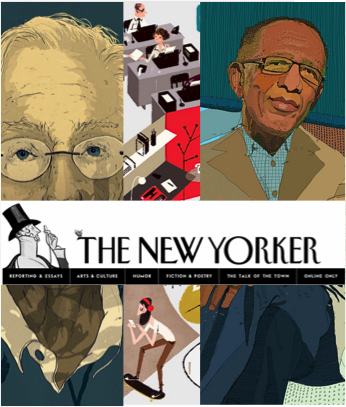
We sociologists tend to have a chip on our shoulder. We tend to think—not without substantial evidence, of course—that our research and ideas are not particularly visible or influential in the public realm, both in general and especially in comparison to our social science cousins. Maybe we should all be reading The New Yorker. It seems like we’ve got a few champions over there.
Exhibit A: A few weeks back, for example, the magazine ran an intriguing and insightful profile of Howie Becker. This was not a fluff piece. Inspired by Becker’s current popularity among a certain set of French sociologists in Paris (where the 86-year-old Becker now spends a great deal of his time), Adam Gopnik’s* article thoughtfully walks readers through Becker’s intellectual career and distinctive way of thinking about deviance, culture, and collective activity. This wonderfully written piece serves, I think, not only to introduce a broad, general audience of readers to one of the truly iconic (and iconoclastic) figures in sociology and his uniquely sociological worldview. More than this, it frames and situates Becker’s work in the broader history and current debates of the field in a subtle, sophisticated way that I believe proves provocative and edifying no matter how much we may already know and think about the discipline and Becker’s contributions to it. (For you insiders: Becker directs a zinger or two at Pierre Bourdieu along the way.)
Exhibit B: Last May, a review of recent books on office design by Jill Lepore was framed around a discussion of C. Wright Mills’s classic 1951 study White Collar. Although ostensibly about new studies of the new trends in office work, this review, at least in my reading, seems more fascinated with and driven by what Mills and his sociological perspective contribute to our understanding of life and work and contemporary work culture than anything written recently from more specialized scholars and fields. more...

